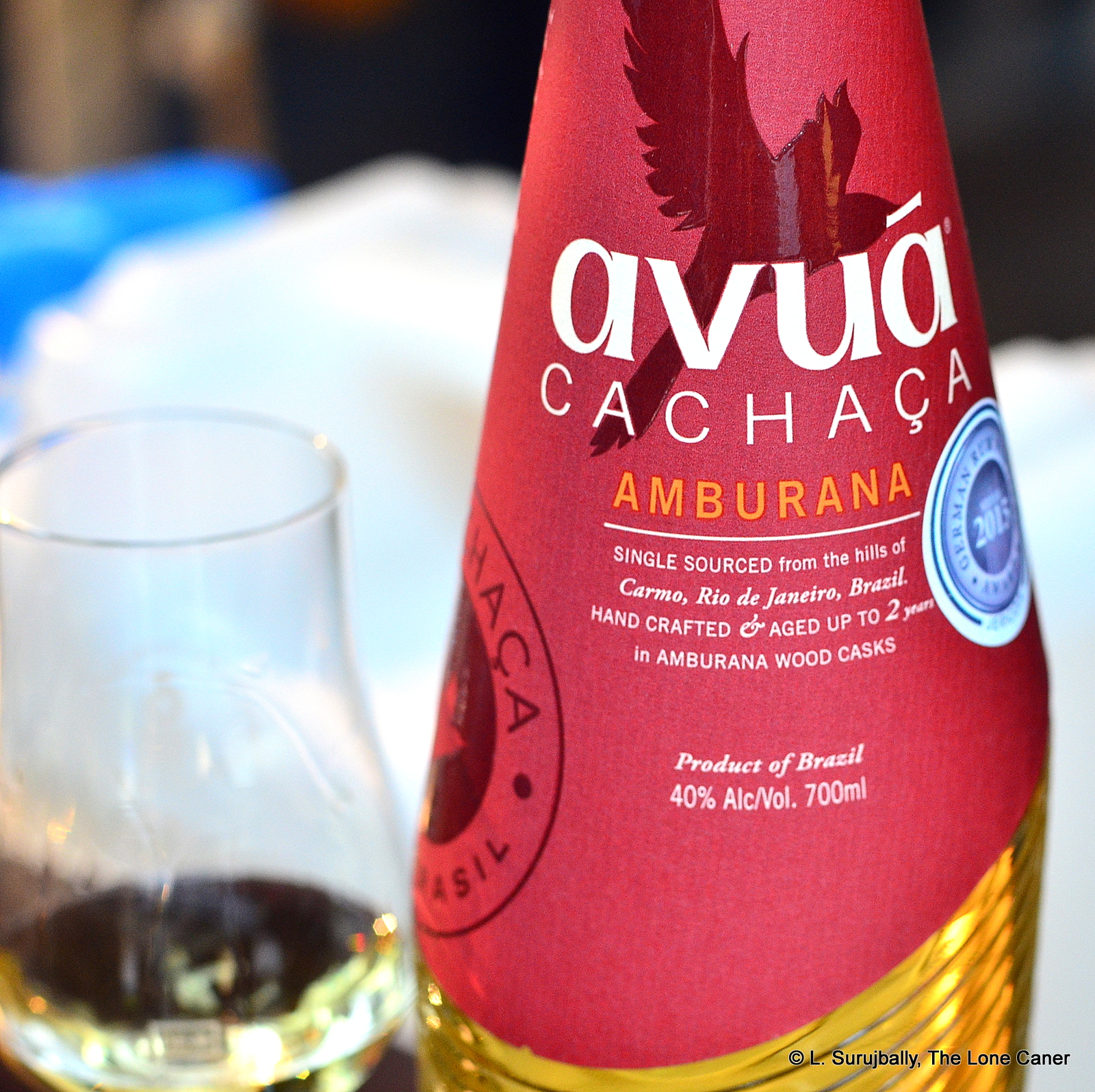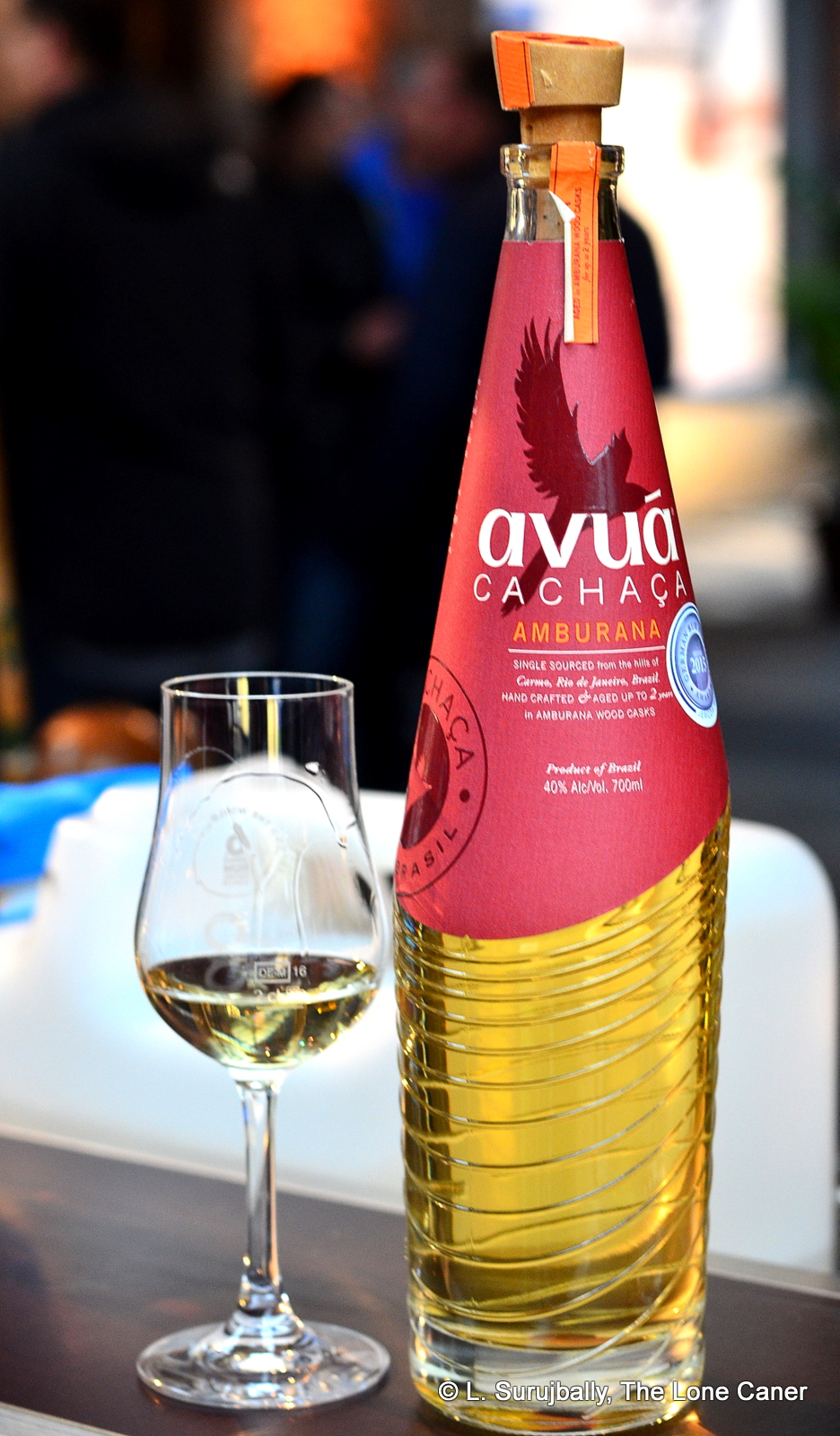
#493
The other day I read that there are supposedly forty thousand cachaça producers in Brazil ¹ — if that statistic is actually true, then most are probably from small ops like the 500+ or so in Haiti – backyard moonshineries, rather than medium to large commercial operations. But there is no doubting that they represent a significant slice of the global volume of cane-derived spirits and it’s too bad that so few reviews of them exist (perhaps the lack of exports is to blame – most is drunk in-country; or maybe we need some Brazilian spirits bloggers).
A major characteristic of cachaças, when aged, is the resting in barrels made of local hardwoods. That peculiarity of local ageing is, to me, rather crucial when it comes to distinguishing an aged cachaca from any other rum. It’s what makes aged cachaças unique — most of us are so used to our hooch being decanted from ex-bourbon barrels, that to address a Brazilian rum for the first time can come over as a startling experience (note – I am using the term rum and cachaça interchangeably).
Take for example the Cachaça Avuá Amburana, made by Fazenda da Quinta, a small 3rd generation outfit founded in 1923, located just outside Rio de Janeiro. Their cachaça is made from two types of sugar cane, has a 24 hours fermentation period, and is pot still distilled. As the name implies, it is aged in barrels made of amburana wood (which supposedly imparts an intense colour and flavours of sweetish vanilla) for up to two years and is bottled at 40%.
 Does the amburana make for a uniquely different taste profile? Yes and no. It certainly presented aspects that were similar to young agricoles – fresh and crisp aromas of watery pears, sugar cane sap, swank and watermelon just to start with, clear without real sharpness. It’s after opening up for a few minutes that it shows its antecedents more clearly, because other smells, somewhat more unusual, begin to emerge – cinnamon, nutmeg, bitter chocolate, sawn lumber, wet sawdust, freshly baked dark bread. Not your standard fare by any means.
Does the amburana make for a uniquely different taste profile? Yes and no. It certainly presented aspects that were similar to young agricoles – fresh and crisp aromas of watery pears, sugar cane sap, swank and watermelon just to start with, clear without real sharpness. It’s after opening up for a few minutes that it shows its antecedents more clearly, because other smells, somewhat more unusual, begin to emerge – cinnamon, nutmeg, bitter chocolate, sawn lumber, wet sawdust, freshly baked dark bread. Not your standard fare by any means.
The palate was quite firm for a 40% rum, stopping just short of sharp and marrying complexity with a variety of flavours in decent balance with each other. It had both red wine and muskier whisky notes, and bags of the aforementioned spices – cinnamon and nutmeg. Vanilla, ginger, sugar water, gherkins, cucumbers, a sharp cheddar, sawdust…and also a weird line of sweet bubble gum. And, of course, some herbal grassiness – but overall the defining taste was mostly the cinnamon and swank with that slight bitter background. This continued smoothly into a longish finish that again brought out the bubble gum, some Sprite (or 7-Up, take your pick), faint citrus, more cinnamon and vanilla, and a bit of sugar cane sap. A little dry, overall, but pleasingly complex and tasty for all that. I just wish it had been bumped up in proof a few notches – at ~45% it might just be amazing.
Tasting the Avuá Amburana blind, without some experience or comparators around, you’d be hard pressed to identify the country of origin (though the slight bitterness, woodsy taste and cinnamon background would likely give it away), and might even confuse it with an agricole – probably to the displeasure of any Brazilian. Be that as it may, I quite liked it, and since its introduction in 2013 it’s made a quiet splash in North America, as well as winning awards in 2015 (Berlin Rumfest) and 2016 (Madrid Congreso del Ron).
Brazilians involved in the production of cachaças are at pains to distinguish them from agricoles, but any casual rum aficionado would have some difficulty following the logic – after all, both derive from cane juice, distilled on either pot or column stills, the cane juice has a short fermentation time and is processed soon after harvesting. Regulations are specific to each region: for example, a cachaça can only be called so if it derives from Brazil and at least 50% of the blend is aged for a minimum of one year, and for me that’s a naming and production convention and not a serious departure from agricoles (to use another example, calling only a rum made in Guyana a “Demerara” does not make it any less of a rum). Also, as briefly noted above and more applicable to Brazil, a cachaça can (but does not have to) be aged in local woods like jequabita, amburana, carvalho etc, and not the more “traditional” oak barrels like ex-bourbon, ex-cognac, limousin oak, and so on – however, since the type of wood of the ageing barrel is not a disqualifier for any rum or ron or rhum anywhere in the world (except perhaps Cuba), this again seems more a local peculiarity, not a fundamental difference between the two types of rum.
So in other words, given the cane juice origin, then either cachaça is a Brazilian agricole, or agricoles are French cachaças. To me such distinctions are geographical, not fundamental. Irrespective of the pride that the producing countries bring to their indigenous rums, production philosophies and heritage, both have interesting products that are cool to drink and make killer cocktails. That the French island rhums currently get more good press than cachaças do is no reason to ignore the latter – taken with their uniqueness and taste and wide applicabilty, something like the Avuá Amburana is good to experience if you want to go a little off the beaten track without heading into the jungle altogether. It’s a pretty nifty cachaça that’s well worth checking out.
(84/100)
Other notes
- ¹ Messias Soares Cavalcante, A verdadeira história da cachaça. São Paulo 2011 page 608
- Uncoloured, unfiltered. Small batch production. Each bottle is numbered
- Ralfy gave the Avua an in-depth look on his video in May 2017.
- Matt Pietrek, the Cocktail Wonk, used this rum to provide an introduction to cachaças, back in 2015. It’s also got some good historical notes on the founders.
This is new to me. Some of the cachaca in the blend has to be aged? And I’ve been asking myself for a long time why we dont see any aged cachaca